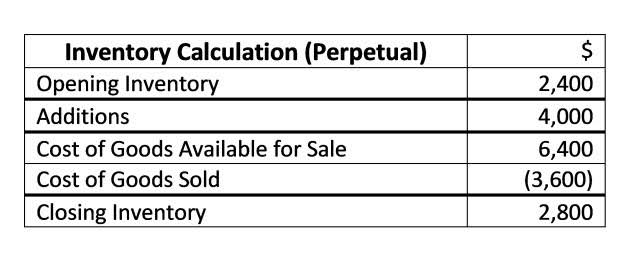
Having a standard revenue recognition guideline helps to ensure that an apples-to-apples comparison can be made between companies when reviewing line items on the income statement. Revenue recognition principles within a company should remain constant over time as well, so historical financials can be analyzed https://www.bookstime.com/ and reviewed for seasonal trends or inconsistencies. The matching concept and revenue recognition concept affect the various financial statements in different ways. Let’s look at how these two principles affect the income statement, balance sheet, and cash flow statement with a simple exercise.

Identify the performance obligations in the contract
If there is any change in the transaction price, organizations can either modify the existing contract or create a new contract. If they decide to modify the existing contract, the changes in transaction price must be allocated to the performance obligation based on the same method that was according to the revenue recognition principle used when the contract was created. Before 2014, the guidance for revenue recognition and contracts was industry-specific, which made it fragmented and difficult to implement. Further, owing to this disparity, it was difficult to compare the performance of companies across industries.
How Revenue Recognition Affects Every Department of a Company
- No matter what type of accounting your business is using, the revenue recognition principle remains the same.
- In order to produce accurate financial statements, it’s important to understand and properly use the revenue recognition principle.
- Understanding the revenue recognition principle is important in analyzing financial statements.
- Revenue accounting is fairly straightforward when a product is sold and the revenue is recognized when the customer pays for the product.
- The tradeoff for the company receiving these benefits from the credit card company is that a fee is charged to use this service.
As a result, there are several situations in which there can be exceptions to the revenue recognition principle. Revenue recognition is a generally accepted accounting principle (GAAP) that identifies the specific conditions in which revenue is recognized and determines how to account for it. Revenue is typically recognized when a critical event has occurred, when a product or service has been delivered to a customer, and the dollar amount is easily measurable to the company.
Stop paying for time-based accounting and start paying for actual results
- Together, they determine the accounting period in which revenues and expenses are recognized.[1] In contrast, the cash accounting recognizes revenues when cash is received, no matter when goods or services are sold.
- Finally, in Year 3, when the customer settles their bill, accounts receivable will show a decrease, while cash will see an increase.
- Before 2014, the guidance for revenue recognition and contracts was industry-specific, which made it fragmented and difficult to implement.
- Let’s say you sell a software program, and you have just secured a contract to supply a new program to every user of a massive Fortune 500 client.
- By adhering to this principle, a company can provide accurate and reliable financial information that can be used by stakeholders to make informed decisions.
If a company ends up collecting more cash than expected due to under-recognized revenue, then it may miss out on additional resources that could have been used to help the company grow even faster. Accrual accounting refers to an accounting method used to gauge a company’s performance through the recognition of revenue at the time of sale. This allows businesses to be more upfront and clearly transparent to stakeholders about the sales that are occurring. The accrual accounting method is required for publicly traded companies that must conduct accounting through the use of generally accepted accounting principles (GAAP). Many private and small businesses also use GAAP accounting standards but they are not required to. These methods can significantly impact financial reporting and when income is recognized on a company’s financial statements.
Understanding the LTV CAC Ratio: A Key Metric for Business Success
Only after it has completed all work under the arrangement with the customer can it recognize the payment as revenue. The revenue recognition principle enables your business to show profit and loss accurately, since you will be recording revenue when it is earned, not when it is received. If your business uses accrual accounting, you should know and understand the revenue recognition principle, sometimes known as the revenue principle. Revenue recognition is an accounting principle that outlines the specific conditions under which revenue is recognized. In theory, there is a wide range of potential points at which revenue can be recognized. Previous revenue recognition principle was industry-specific, which made it complex and difficult to implement.

Applying the revenue standard
- Revenues are realized or realizable when a company exchanges goods or services for cash or other assets.
- This method considers costs incurred and efforts expended as a proportion of the total project costs to determine when and how much revenue can be recognized.
- In the second case, you have less cash on hand than you have earned, and you might not even receive all the money you have earned.
- This is a key concept in the accrual basis of accounting because revenue can be recorded without actually being received.
- It also highlights the commitment of the parties to fulfill their obligations.
At times, businesses may just want to stretch the meaning of revenue, especially because they have not yet received the cash in hand right after the job is completed. As a matter of fact, the topic of “revenue recognition” has been a popular discussion since Accounting Standards Codification (ASC) 606 was introduced in 2014 by the Financial Accounting Standards Board (FASB). It is basically a key accounting rule that can help understand when your company should formally record its income. A variation on the example is when the same snow plowing service is paid $1,000 in advance to plow a customer’s parking lot over a four-month period.
Explore Business Topics
- The company must assess the probability of receiving the consideration it’s entitled to receive under the contract.
- As a result, there are several situations in which there can be exceptions to the revenue recognition principle.
- This principle helps public and private companies align their accounting practices with the revenue recognition principle to achieve accurate financial reporting.
- This is mainly applicable in the case of purchase of high ticket goods such as real estate, machinery, equipment and appliances.
- The five-steps of revenue recognition is the framework provided by ASC 606 for revenue recognition for all organizations.
- This is a lot to take in at once, but with practice you’ll be able to quickly deduce when and where your revenue and expenses need to be reported.
Do all businesses need to follow revenue recognition principles?

Leave a Reply